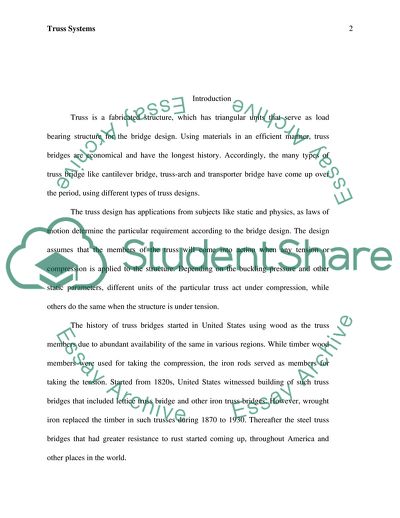Cite this document
(Bridge Design: Truss Systems Coursework Example | Topics and Well Written Essays - 1500 words, n.d.)
Bridge Design: Truss Systems Coursework Example | Topics and Well Written Essays - 1500 words. https://studentshare.org/engineering-and-construction/1863103-involve-the-four-different-types-of-truss-system
Bridge Design: Truss Systems Coursework Example | Topics and Well Written Essays - 1500 words. https://studentshare.org/engineering-and-construction/1863103-involve-the-four-different-types-of-truss-system
(Bridge Design: Truss Systems Coursework Example | Topics and Well Written Essays - 1500 Words)
Bridge Design: Truss Systems Coursework Example | Topics and Well Written Essays - 1500 Words. https://studentshare.org/engineering-and-construction/1863103-involve-the-four-different-types-of-truss-system.
Bridge Design: Truss Systems Coursework Example | Topics and Well Written Essays - 1500 Words. https://studentshare.org/engineering-and-construction/1863103-involve-the-four-different-types-of-truss-system.
“Bridge Design: Truss Systems Coursework Example | Topics and Well Written Essays - 1500 Words”. https://studentshare.org/engineering-and-construction/1863103-involve-the-four-different-types-of-truss-system.


